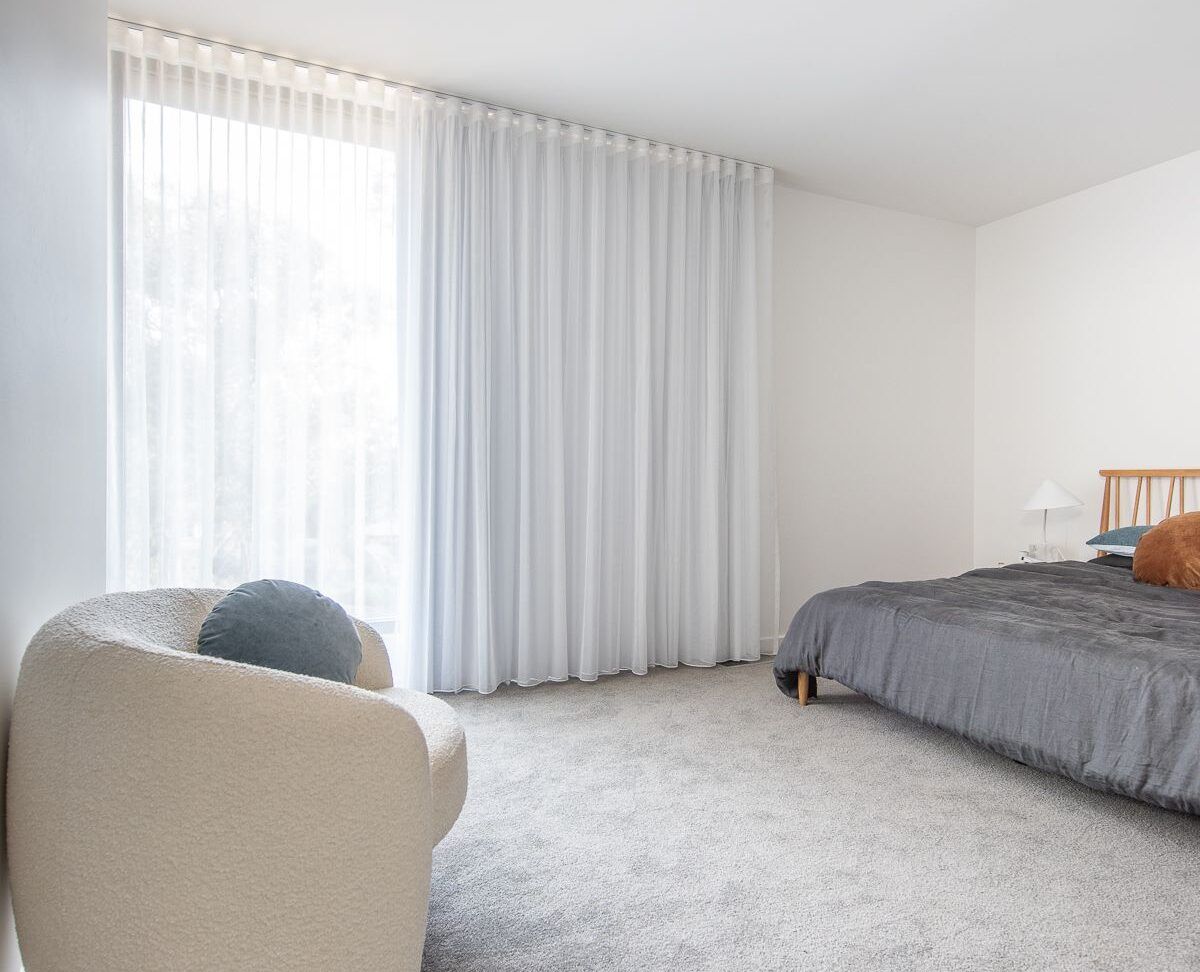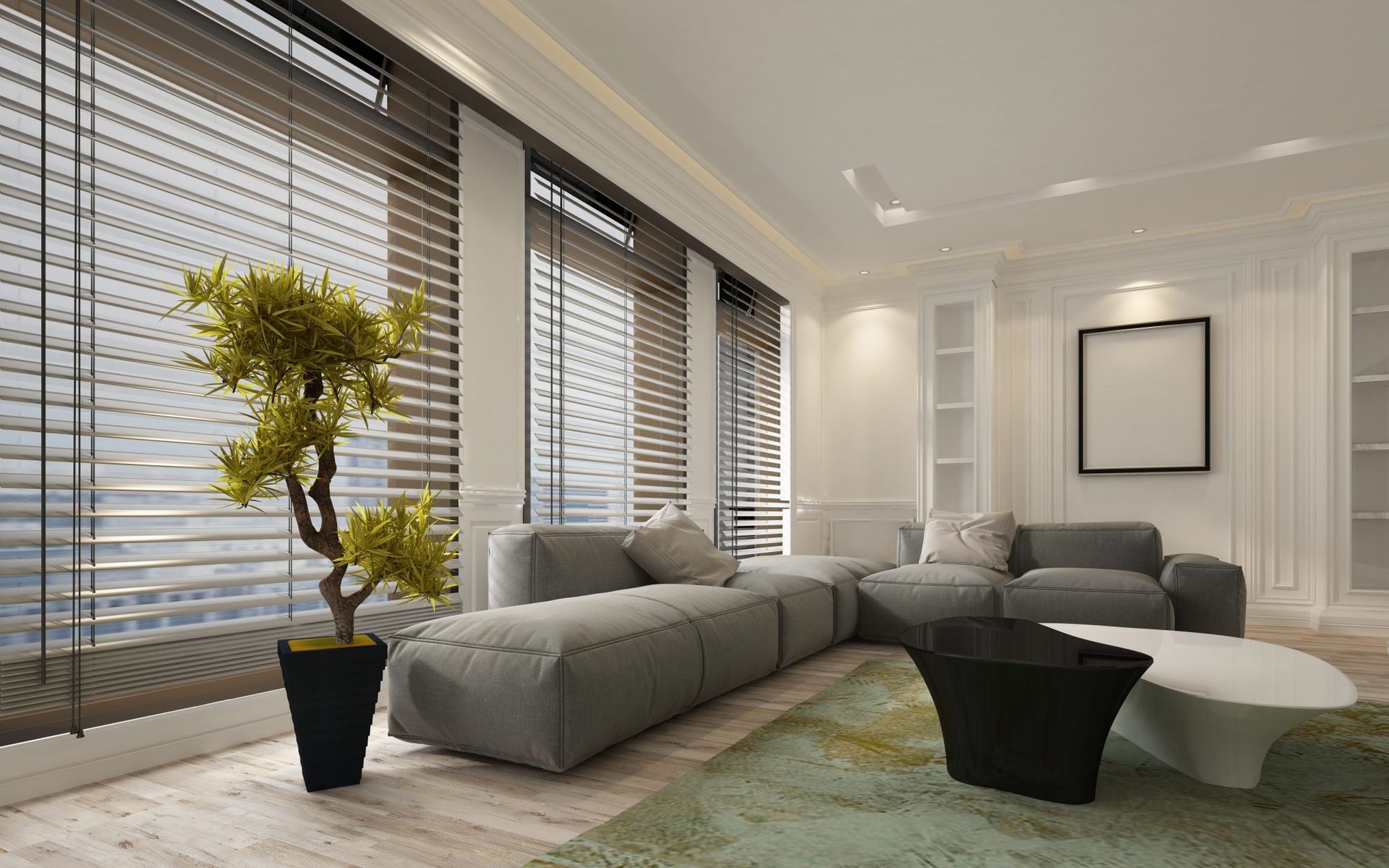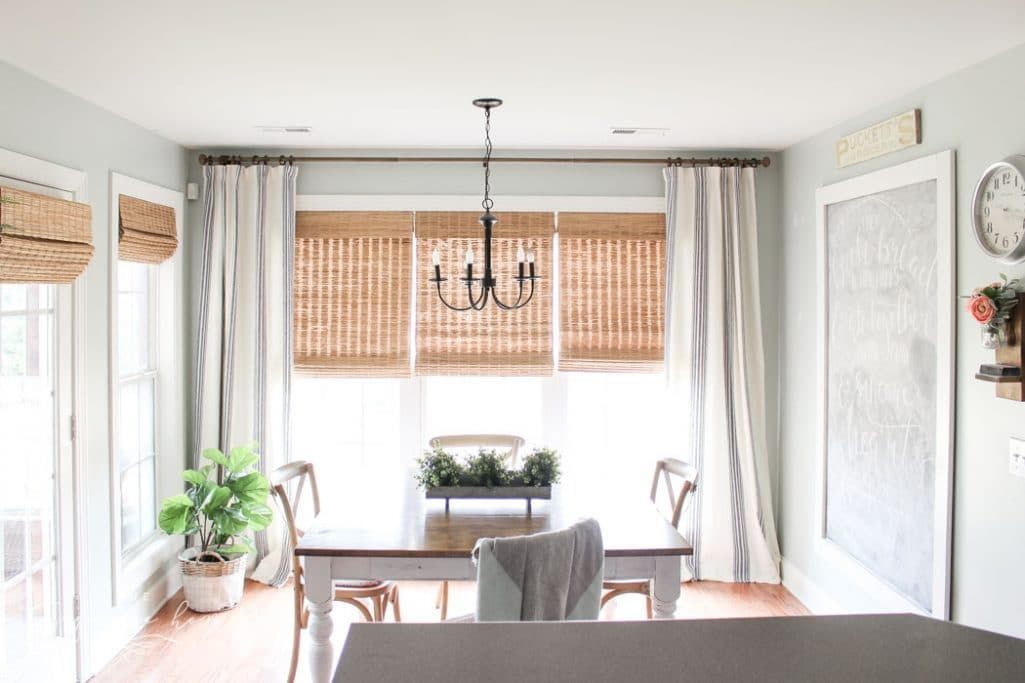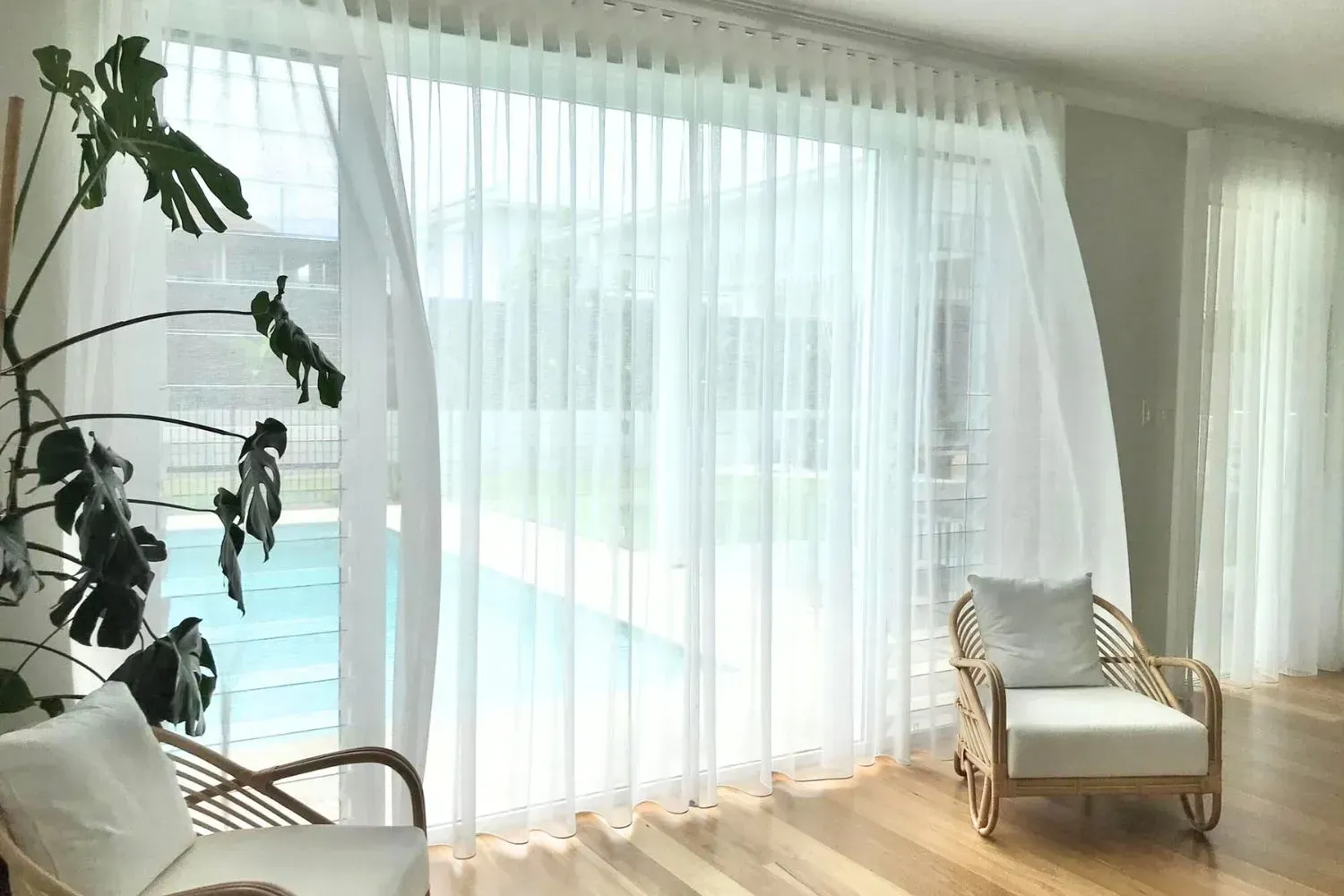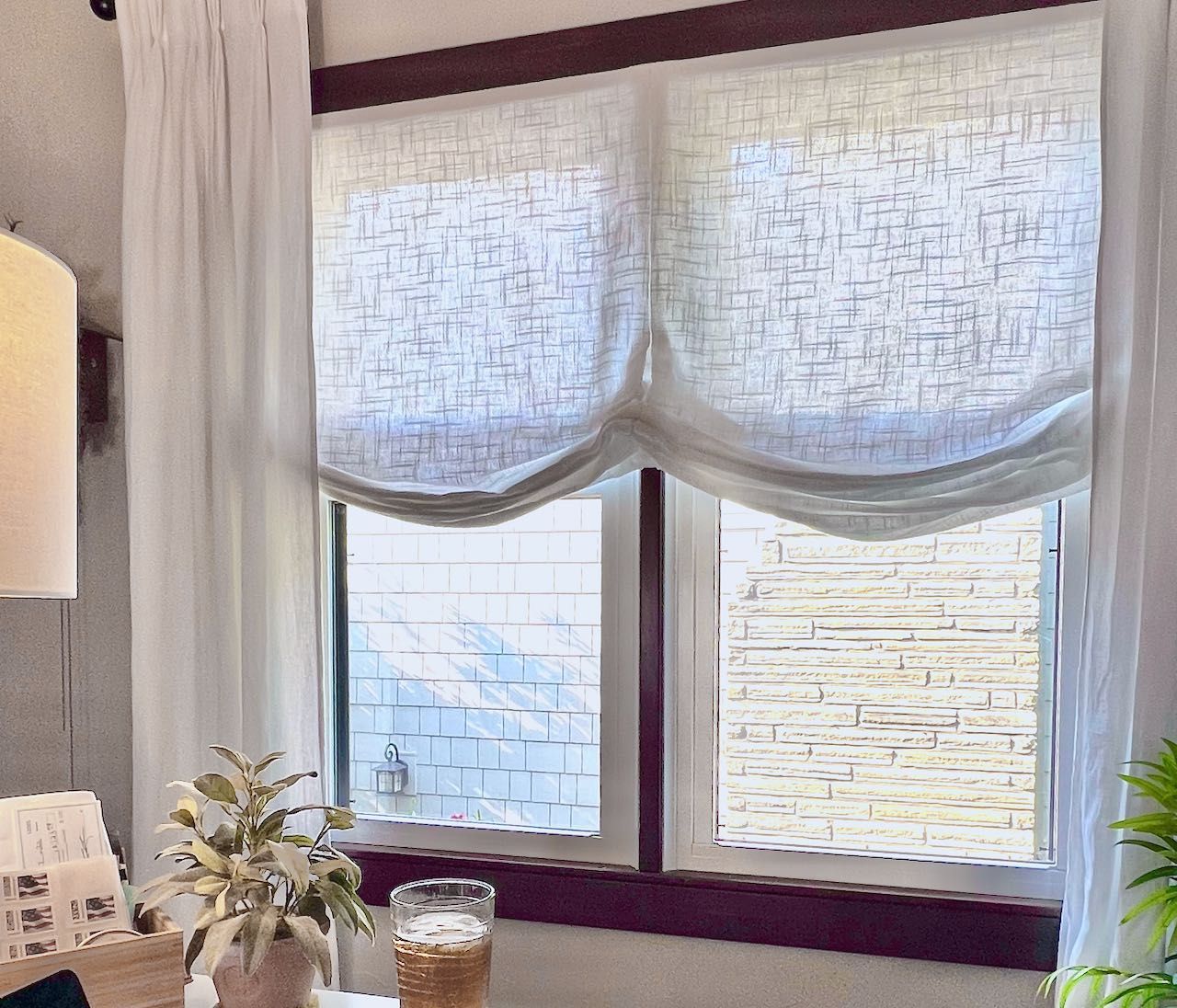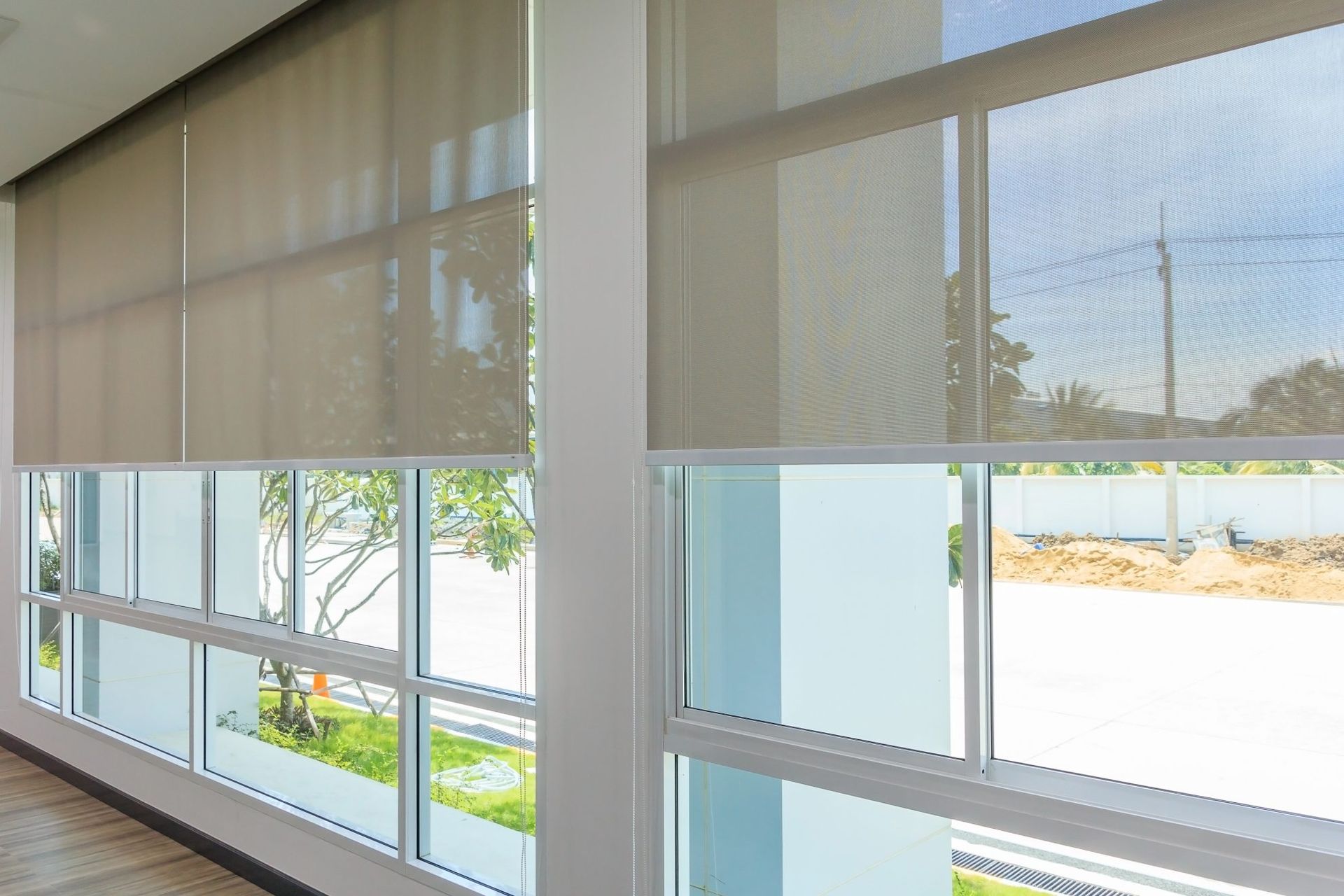Do Blackout Curtains Help Keep the Heat Out?
TLDR;
Yes, blackout curtains do help keep the heat out. By blocking sunlight and reducing solar heat gain, they act as an extra layer of insulation for your windows, making rooms cooler and more energy-efficient—especially during hot summer months.
What Are Blackout Curtains and How Do They Work?

Blackout curtains are made from tightly woven, multi-layered fabric designed to block out light and reduce heat penetration. But there’s more to them than just darkening a room.
- Triple-weave blackout fabric is a common material, often featuring a black yarn layer sandwiched between decorative outer layers. This structure not only blocks light but also reduces heat transfer.
- Unlike sheer or lightweight curtains,
dense curtain fabrics minimize the amount of sunlight and UV radiation that enters a room.
- Some blackout curtains also include a
foam backing or liner, improving their ability to
insulate and block heat.
In short, blackout curtains do more than darken a room—they work by
absorbing and reflecting heat, acting as a barrier between your indoor space and the sun’s rays.
How Blackout Curtains Affect Indoor Temperature
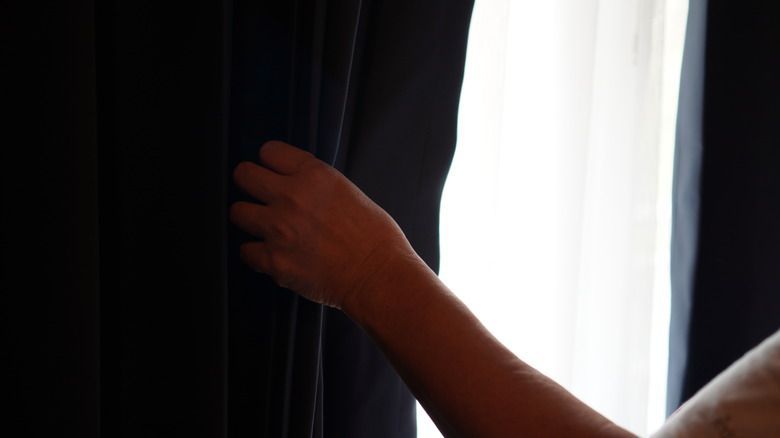
To understand the real impact, you need to consider how heat enters your home.
- Heat gain through windows is one of the largest sources of indoor heat during summer.
- South- and west-facing windows are especially vulnerable to solar radiation.
- Blackout curtains reduce heat gain by blocking direct sunlight and minimizing the temperature rise caused by
infrared and UV radiation.
When the sun hits a window, it doesn't just light up the room—it heats it. Blackout curtains help reduce:
- Radiant heat
- Solar heat gain
- Energy transfer through glass
This means cooler rooms and lower air conditioning costs—an outcome your electric bill will thank you for.
Do Blackout Curtains Keep the Heat Out in Summer and Cold Out in Winter?
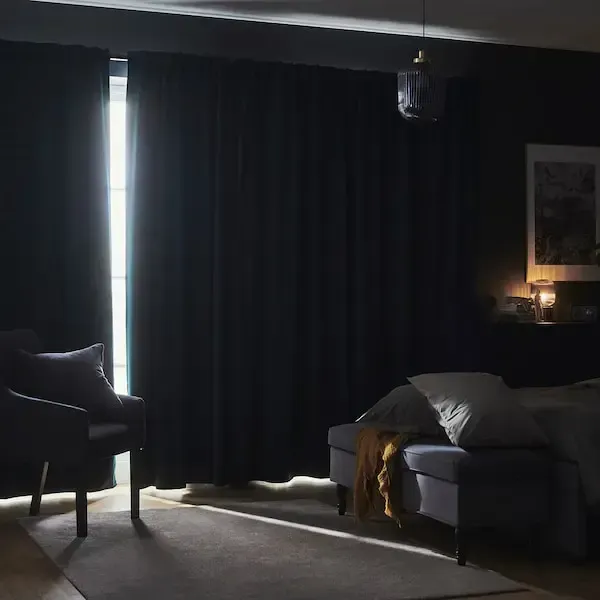
Yes, and that’s one of their biggest unsung strengths: year-round insulation.
- In summer, they keep the
heat out by blocking sunlight and reducing solar gain.
- In winter, they help
retain warmth by providing a thermal barrier between cold window surfaces and your interior space.
The effectiveness depends on:
- Fabric density
- Curtain length and fit
- Whether the curtain has a thermal liner
Many homeowners in Kentucky, including clients of
Love Is Blinds KY, opt for
thermal-insulated blackout curtains to enjoy comfortable temperatures throughout the year without cranking up the HVAC.
Blackout vs Thermal Curtains: What’s the Difference?
Although often confused, blackout curtains and thermal curtains serve different core purposes.
| Feature | Blackout Curtains | Thermal Curtains |
|---|---|---|
| Primary Function | Light blocking | Temperature regulation |
| Material | Dense, opaque fabric | Insulated with foam or thermal lining |
| Light Blocking | 85–100% | Often partial |
| Heat Retention | Moderate | High |
Thermal blackout curtains combine both technologies and offer the best of both worlds—light control and temperature regulation. These are a great choice for homeowners who want one solution for heat and cold management.
Do Color and Curtain Fabric Matter for Heat Reduction?
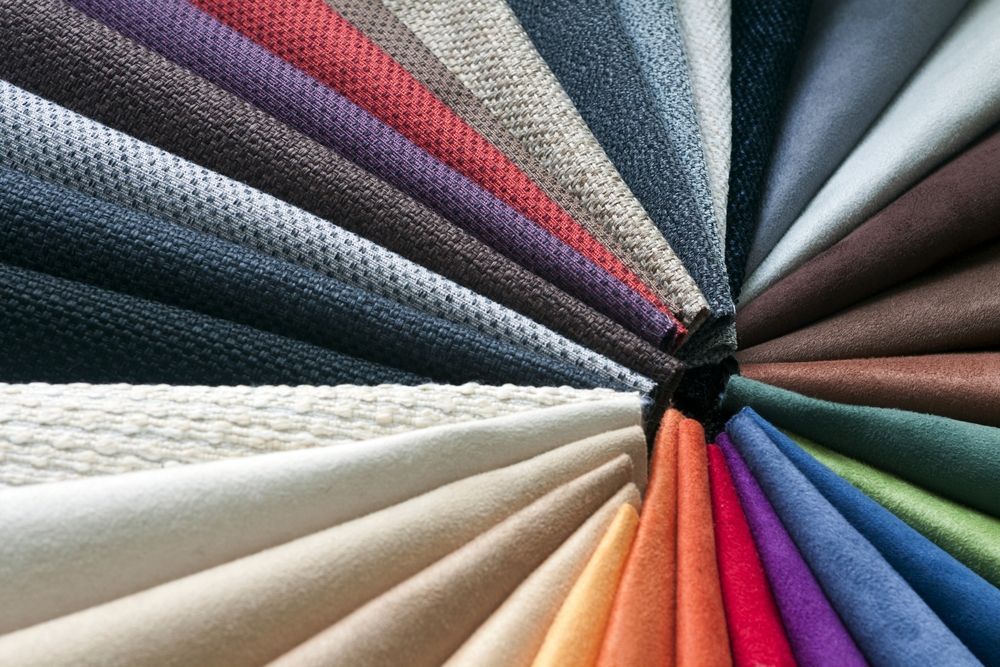
Absolutely. Color plays a major role in how much heat is absorbed or reflected by your curtains.
- Dark-colored blackout curtains tend to
absorb more heat, which can sometimes transfer into the room if the fabric lacks insulation.
- Light-colored blackout curtains (especially those with reflective backing) are better at
reflecting heat, making them ideal for sun-exposed rooms.
Key materials to consider:
- Reflective curtain lining or backing improves thermal performance.
- Tightly woven fabrics provide better insulation than loose weaves.
If your goal is heat reduction, opt for
light-colored blackout curtains with a reflective or thermal backing.
Best Practices to Maximize the Heat-Blocking Power of Blackout Curtains
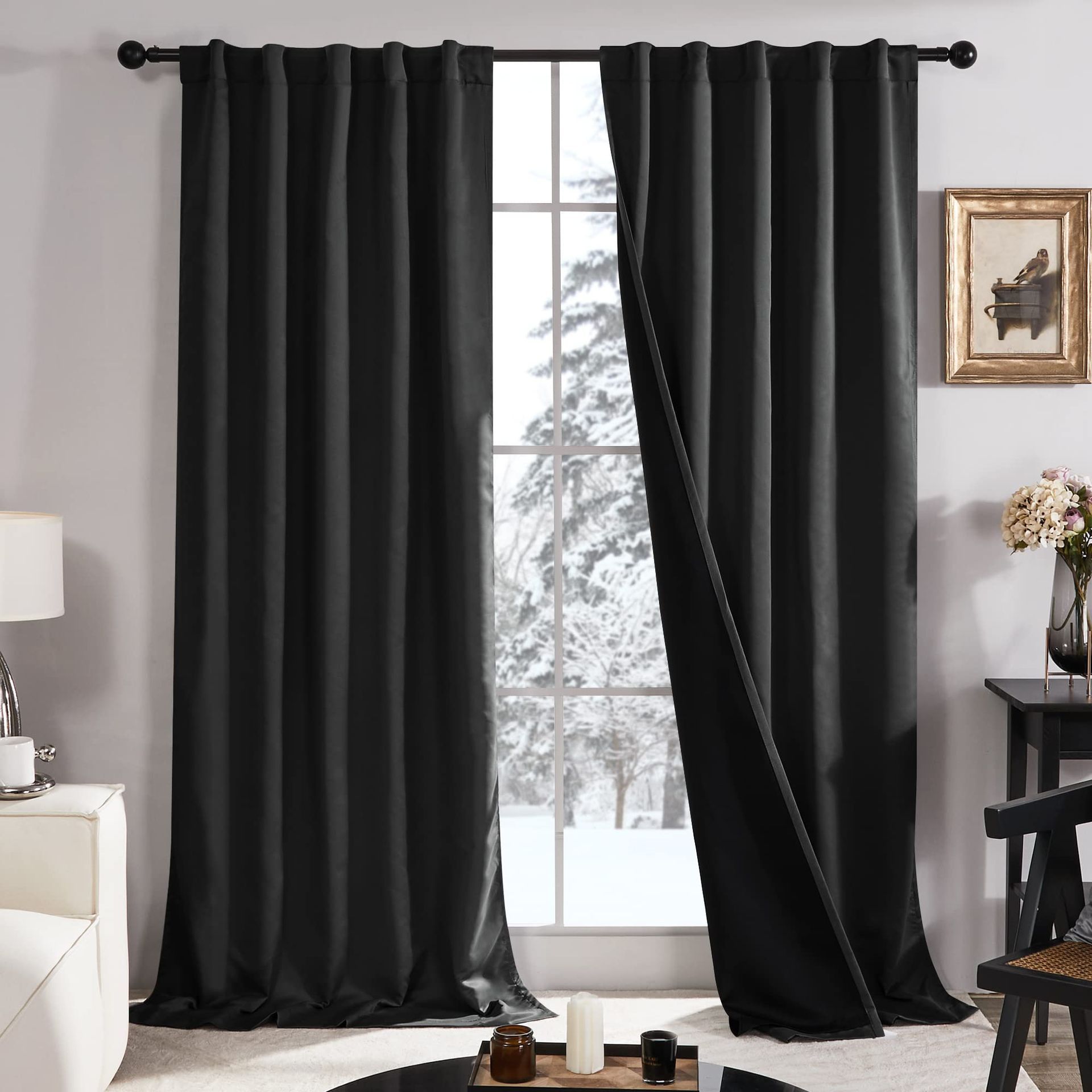
Even the best curtain won’t perform well if it’s poorly installed. To get the most out of your blackout curtains:
- Mount curtains from ceiling to floor and extend them wall-to-wall when possible to reduce light gaps.
- Use a snug fit with minimal gaps between the curtain and the wall or window frame.
- Install curtain rods close to the ceiling, and use
wraparound rods to curve curtains against the wall.
- Keep them closed during peak sunlight hours, especially mid-afternoon in rooms with direct sun exposure.
- Pair with blinds or reflective window film for enhanced thermal performance.
These small adjustments can significantly improve heat-blocking efficiency.
Additional Benefits of Blackout Curtains
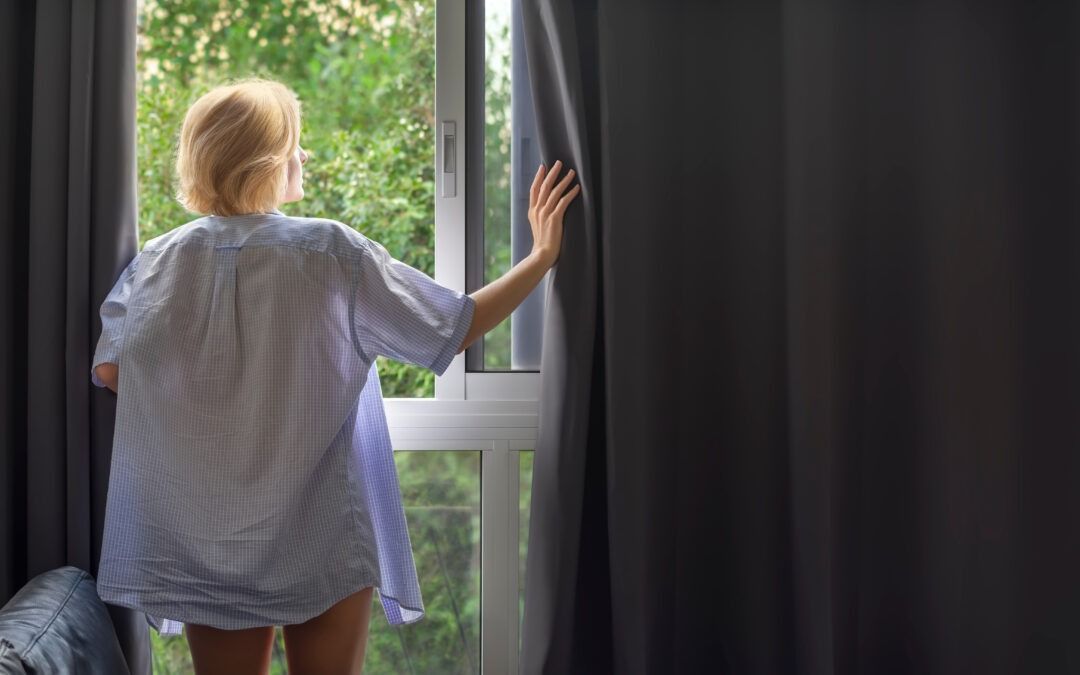
Blackout curtains offer a range of benefits beyond just temperature control.
- Privacy: Thick materials keep prying eyes out—ideal for bedrooms and street-facing windows.
- Sleep Quality: Complete darkness can help regulate circadian rhythms and improve sleep.
- Soundproofing: Heavy fabrics reduce noise levels, great for urban environments or shift workers.
- UV Protection: Blocks harmful rays that fade furniture, floors, and fabrics.
This makes blackout curtains a
multi-functional solution, not just a seasonal fix.
Product Recommendations and Buying Tips

When shopping for heat-blocking blackout curtains, focus on:
- Fabric thickness and quality
- Thermal or foam backing
- Size (ensure full coverage of window area)
- Mounting style (grommet tops provide a tighter seal than rod-pocket styles)
- Curtain length (floor-length provides better insulation than sill-length)
Love Is Blinds KY recommends evaluating brands based on verified thermal performance and user reviews specific to heat insulation—not just light blocking.
Look for labels or descriptions that mention:
- "Thermal-insulated blackout curtains"
- "Energy-efficient
window coverings"
- "UV blocking and heat reduction"
You’ll find these descriptions on packaging and product listings from trusted manufacturers.
Alternatives to Blackout Curtains for Heat Control
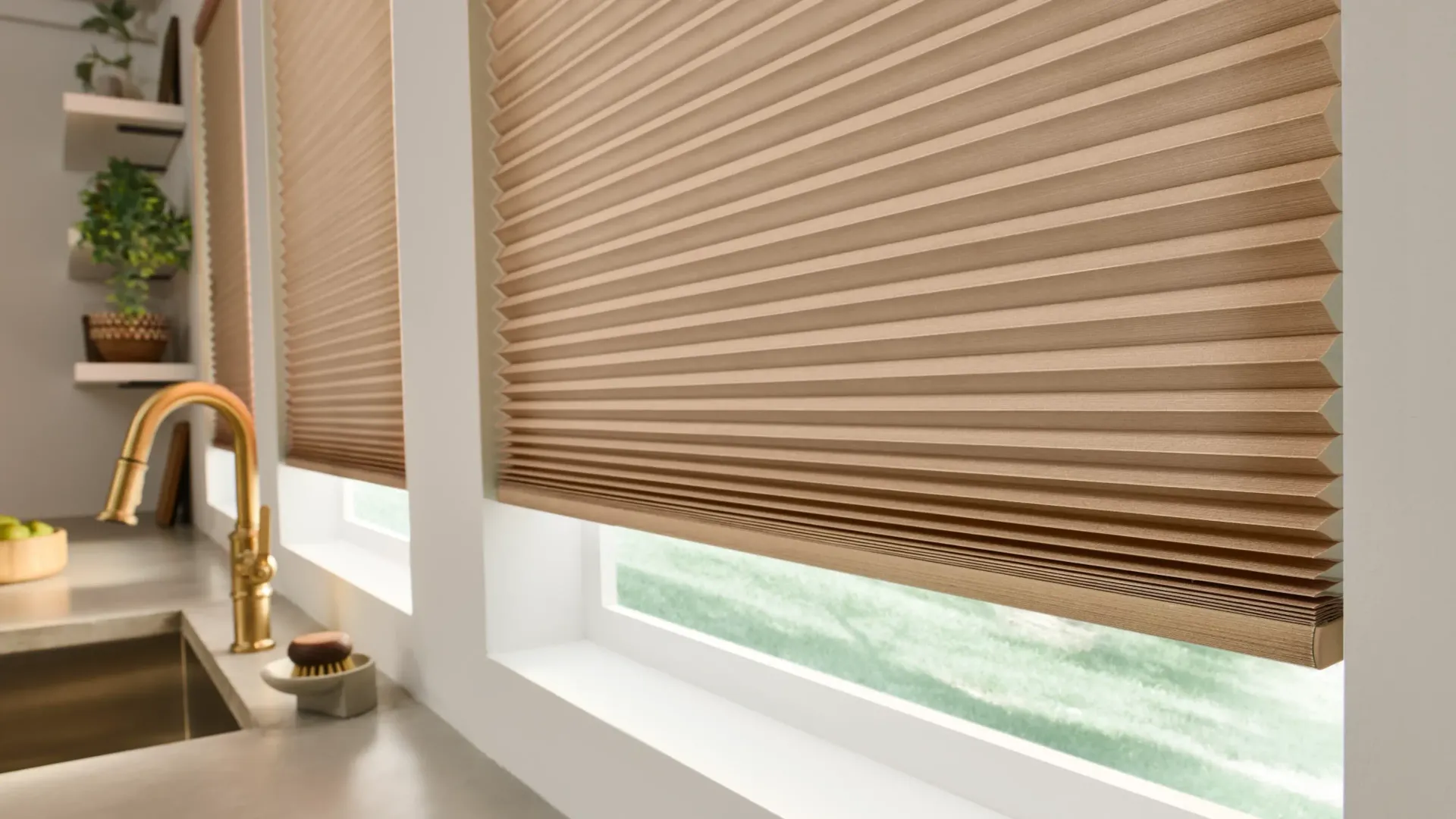
If blackout curtains don’t match your style or space, other energy-saving window treatments can help—like solar shades, which are known for effective Solar Shade Heat Control.
- Heat reflective window films: Apply directly to glass to reduce solar gain.
- Honeycomb shades (cellular shades): Trap air in honeycomb cells, acting as insulation.
- Exterior shutters or awnings: Block direct sunlight before it hits your window.
- Smart window coverings: Automatically adjust based on time of day or sun position.
These can also be used
in combination with blackout curtains for maximum heat control.
FAQs About Blackout Curtains and Heat
Do blackout curtains work without a thermal liner?
Yes, but they’re more effective with a liner. A thermal lining adds insulation and boosts heat-blocking ability.
Will blackout curtains make my room too cold in winter?
Not if used properly. They help trap heat inside by acting as a thermal barrier between cold windows and your warm room.
Can I use blackout curtains in every room?
Yes. They’re especially useful in bedrooms, media rooms, and home offices—but you can install them anywhere you want light control and temperature regulation.
Are Blackout Curtains Worth It for Heat Control?
If you’re looking to reduce energy bills, improve comfort, and protect your furnishings from UV damage, the answer is a resounding yes.
- They block sunlight and reduce heat gain in the summer.
- They offer insulation and warmth in the winter.
- They enhance privacy, improve sleep, and add soundproofing benefits.
For homeowners and businesses in Kentucky,
Love Is Blinds KY recommends blackout curtains as a
cost-effective, energy-efficient solution that’s both practical and stylish.

